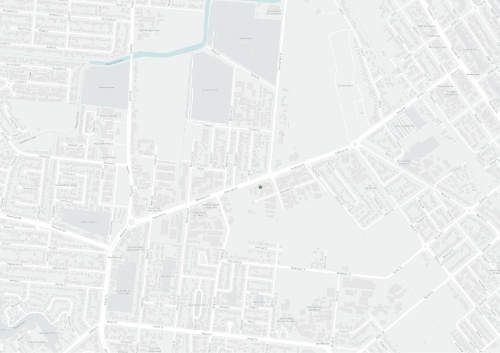Plan Explorer
Filter by:
Region
Topic
Sector
Other
Results
Soil Conservation Act 1986
Current Statutory (law)An Act to consolidate and amend the law relating to the conservation of soil resources and to facilitate the implementation of soil conservation measures by landholders for the mitigation of soil erosion.
Queensland's Agriculture Strategy
Current Government PolicyA 2040 vision to double agricultural production
Strategic Cropping in Cape York
Current InformationalStrategic Cropping in Cape York – what is to be locked away in the draft Strategic Environmental Areas
Western Cape Communities Trust & Western Cape Communities Coordinating Committee strategic plan 2009-2012
Obsolete StrategicThis document was released by the Western Cape Communities Trust (WCCT) and Western Cape Communities Coordinating Committee (WCCCC) as a plan to deliver on 4 key objectives within the mining lease area surrounding Weipa.
South of the Embley communities, heritage and environment management plan
Current OperationalThis community, heritage, and environment management plan was developed by the South of Embley working project group for the area of Rio Tinto Alcan's mining lease between Aurukun and Weipa in mid 2011.
Port of Weipa environmental management plan
Current StrategicThis environmental management plan was released by the North Queensland Bulk Ports Corporation as part of their environmental program with the objective of acting as a reference document for all then-current and potential users of the Weipa port.
Mungumby Community Plan
Current CommunityThis document was released in March of 2012 following a 2007 Federal Court ruling which recognised the Eastern Kuku Yalanji people's of 129,600ha of country between the South Mossman River and just North of Black Mountain near Cooktown.
Wujal Wujal Aboriginal Shire Council planning scheme
Current CommunityThe Wujal Wujal planning scheme was released in 2013 by the Wujal Wujal Aboriginal Shire Council and set out the council's intention for the future of Wujal Wujal over the next 20 years from 2013.
Northern Peninsula Area Council 2010-2020 Land and Environment Management Plan introduction
Current StrategicThis document is the introductory pages for the Northern Peninsula Area Council's 2010-2020 Land and Environment Management Plan released in December 2010.
Draft Cape York Peninsula Natural Resource Management Plan (2005)
Obsolete Government PolicyThe aim of the Plan is to ensure that natural resources are well managed, and protected where required, for the benefit of us all and future generations. The Plan aims as far as possible to be consistent with other regional strategies.
Annan and Endeavour Strategic Plan
Current StrategicThe Annan-Endeavour Catchment Management Group has developed this Strategy in close association with all interested community, government and industry groups.
Cape York Peninsula Heritage Act 2007
Current Statutory (law)An Act to provide for the identification of the significant natural and cultural values of Cape York Peninsula, and cooperative and ecologically sustainable management of Cape York Peninsula.
Coastal Management Plan
Current Government PolicyThe Coastal Management Plan is prepared under the Coastal Protection and Management Act 1995 (Coastal Act) to describe how the coastal zone of Queensland is to be managed.
Cape York Regional Plan
Current Government PolicyPublished by the Department of State Development, Infrastructure and Planning. The plan identifies and interprets the state’s interests in land use planning and development, as described in the State Planning Policy, for the Cape York region.
Kaanju Homelands Wenlock & Pascoe Rivers Cape York Peninsula Indigenous Protected Area Management Plan
Obsolete OperationalPrimarily, this Plan is for Kaanju people living on homelands, but it also serves as a guide for external land and resource management, conservation, service delivery, economic development and community development organisations and agencies, both government and non-government, engaged with Chuul
Laura Ranger Country Plan and Poster
Current OperationalPoster outlining a set of guiding priniciples on which Laura Rangers will operate on their country.
Laura-Normanby Catchment Management Strategy
Current StrategicThe Laura-Normanby Catchment Area covers a vast and relatively undeveloped area with extensive riverine and wetland systems, one of Queensland's largest conservation areas (Lakefield National Park), numerous sacred aboriginal sites, good cattle country and rich agricultural lands.
Mitchell River Watershed Strategic Plan
Current StrategicThe Mitchell River Watershed Strategic Plan 2013-2016 is an update of the Mitchell River Watershed Management Plan created in 2000.
Reef Water Quality Protection Plan 2013
Current Government PolicyReef Plan is a joint commitment of the Australian and Queensland governments. The plan is a collaborative program of coordinated projects and partnerships designed to improve the quality of water in the Great Barrier Reef.
Upper Mitchell Catchment Rehabilitation Plan
Current StrategicTechnical Report on Rehabilitation Needs
Vegetation Management Act 1999
Current Statutory (law)The purpose of this Act is to regulate the clearing of vegetation in a way that:
Eastern Kuku Yalanji Indigenous Protected Area Management Plan Stage 1
Current OperationalCaring for Kuku Nyungkal Country
Our vision for our bubu (land)1 is to
-
Maintain our Nyungkal culture, belief, customs and law/lore;
Recently added
Recovery plan for the Northern Quoll Dasyurus hallucatus
Threatened speciesThis recovery plan was released in 2010 with the ultimate goal of haulting the decline of the Northern Quoll, which are threatened with extinction by cane toads as they have a susceptibility to the toxin.
National recovery plan for the Specatacled Flying Fox Pteropus conspicillatus
Threatened speciesThe Spectacled Flying Fox is consdiered a vulnerable species under the Commonwealth Environment Protection and Biodiversity Conservation Act 1999 and so this plan was developed by the Queensland and Australian Government's in order to secure long term protection of the flying fox populations by r
Recovery plan for the stream-dwelling rainforest frogs of the wet tropics biogeographic region of north-east Queensland 2000–2004
Threatened speciesThis plan was released in 2001 by the Natural Heritage Trust and Queensland Parks and Wildlife Service with the ultimate goal of improving the conservation status of particular species of stream dwelling rainforest frogs within the Wet Tropics.
Whale Shark recovery plan 2005-2010
Threatened speciesThe whale shark is the world's largest fish and one of only three filter feeding shark species, it was listed as vulnerable in 2001 under the Environment Protection and Biodiversity Conservation Act 1999 (EPBC).
National recovery plan for the bare-rumped sheethtail bat Saccolaimus saccolaimus nudicluniatus
Threatened speciesThis plan was released in 2007 with the goal of improving the conservation status of the then critically endangered bare-rumped sheethtail bat.
Recovery plan for threatened seabirds
Threatened speciesThis plan attempted to improve the conservation status of ten species of Sea Birds by protecting and effectively managing breeding and foraging habitats and ensuring that threats such as pest flora and fauna dont prevent population growth.
Plan for the recovery of the southern cassowary
Current Threatened speciesThe southern cassowary (Casuarius casuarius johnsonii) occurs primarily in rainforest habitats but can also be found in woodlands, swamps, and disturbed vegetation forraging for fruits throughout the Wet Tropics.
National recovery plan for the buff-breasted button-quail Turnix olivii
Threatened speciesThe buff-breasted button quail was listed as endangered under the Commonwealth Environment Protection and Biodiversity Conservation Act 1999 and vulnerable and Queensland Nature Conservation Act 1992 prompting the development of this national recovery plan.
National recovery plan for the water mouse (false water rat) Xeromys myoides
Threatened speciesThe water mouse is listed as vulnerable under the Commonwealth Environmental Protection and Biodiversity and Conservation Act 1999 prompting the development of this plan in 2010 in order to improve the conservation status of the species by habitat conservation, threat reduction, research and publ
National recovery plan for the wet tropics yellow-bellied glider Petaurus australis unnamed subspecies
Threatened speciesThe Wet Tropics yellow bellied glider is a small marsupial classified as vulnerable under the Commonwealth Environment Protection and Biodiversity Conservation Act 1999 and Queensland Nature Conservation Act 1992.

